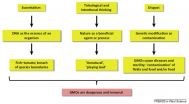(Press-News.org) April 24, 2015 - A simple method of testing "twilight vision" gives reliable results in identifying people who have decreased visual acuity under low light conditions, according to a study in the May issue of Optometry and Vision Science, official journal of the American Academy of Optometry. The journal is published by Wolters Kluwer.
Using filters to test at a light level 100 times lower than for daylight visual acuity testing, vision care professionals can obtain "reliable and repeatable" measurements of twilight vision, report Jason S. Ng, OD, PhD, and colleagues of Southern California College of Optometry at Marshall B. Ketchum University in Fullerton, Calif.
Testing Twilight Vision--Looking for a Standard Method
The researchers sought to develop a standardized approach to testing vision at low light levels. "Typically, eye chart visual acuity is measured at light levels that approximate daylight (photopic) vision conditions," explains Anthony Adams, OD, PhD, Editor-in-Chief of Optometry and Vision Science. "However, twilight vision, or vision at dusk (mesopic vision) can be noticeably worse for some people and especially for some patients with eye problems."
In 43 healthy subjects, Dr. Ng and colleagues tested visual acuity at daylight level and, using light filters, at three different mesopic light levels. They made detailed assessments to determine how vision was affected not only by lower light levels, but also by other potential explanatory factors--including the normal increase in pupil size at lower light levels.
With each progressive reduction in illumination, visual acuity decreased significantly. In the young group of study volunteers (average age 25 years), vision decreased from normal (approximately 20/20) in daylight to almost 3 eye chart lines worse at the darkest level tested. Vision at the recommended test light level for twilight vision was closer to 1.5 lines worse than normal.
"The light level itself was found to explain the vast majority of the variance" in vision with decreased illumination, Dr. Ng and coauthors write. The change in pupil size at lower light levels was unrelated to the change in visual acuity, while the "focus posture" of the eyes (accommodative error) had only a small effect.
The middle of the three mesopic levels tested provided a "significant and repeatable" decrease in visual acuity. The researchers recommended this light level--equivalent to a 100-times decrease from daylight illumination--for routine testing.
Sometimes called "night myopia," decreased twilight vision is a significant functional problem for many young adults who have a slight shift toward myopia. Older adults can also have poor twilight vision for other reasons that relate more to the decreased clarity of the eyes' contents (such as the internal lens of the eye) with age. Still others may have retinal eye diseases that cause decreased vision at lower light levels.
But there has been no standardized approach to testing twilight vision, and there are continued questions about the factors contributing to it. The new study provides a simple and reliable approach to testing twilight vision, and shows that the light level itself is the major factor explaining the decrease in visual acuity.
Dr. Ng and colleagues note that the average vision reduction in their young adult group of volunteers was small. But especially with further studies in older age groups, mesopic vision testing could be an important means of testing or screening of various conditions--especially for patients with conditions known to affect night vision. Dr. Ng and colleagues hope their standardized testing method "will allow for more focused research on applying mesopic vision function findings to patient care."
INFORMATION:
Click here to read "Determinants and Standardization of Mesopic Visual Acuity"
Article: "Determinants and Standardization of Mesopic Visual Acuity" (doi: 10.1097/OPX.0000000000000584)
About Optometry and Vision Science
Optometry and Vision Science, official journal of the American Academy of Optometry, is the most authoritative source for current developments in optometry, physiological optics, and vision science. This frequently cited monthly scientific journal has served primary eye care practitioners for more than 75 years, promoting vital interdisciplinary exchange among optometrists and vision scientists worldwide.
About the American Academy of Optometry
Founded in 1922, the American Academy of Optometry is committed to promoting the art and science of vision care through lifelong learning. All members of the Academy are dedicated to the highest standards of optometric practice through clinical care, education or research.
About Wolters Kluwer
Wolters Kluwer is a global leader in professional information services. Professionals in the areas of legal, business, tax, accounting, finance, audit, risk, compliance and healthcare rely on Wolters Kluwer's market leading information-enabled tools and software solutions to manage their business efficiently, deliver results to their clients, and succeed in an ever more dynamic world.
Wolters Kluwer reported 2014 annual revenues of €3.7 billion. The group serves customers in over 170 countries, and employs over 19,000 people worldwide. The company is headquartered in Alphen aan den Rijn, the Netherlands. Wolters Kluwer shares are listed on NYSE Euronext Amsterdam (WKL) and are included in the AEX and Euronext 100 indices. Wolters Kluwer has a sponsored Level 1 American Depositary Receipt program. The ADRs are traded on the over-the-counter market in the U.S. (WTKWY).
For more information about our products and organization, visit http://www.wolterskluwer.com, follow @WKHealth or @Wolters_Kluwer on Twitter, like us on Facebook, follow us on LinkedIn, or follow WoltersKluwerComms on YouTube.
MAYWOOD, Il. - The recent Great Recession was accompanied by a significant and sustained increase in major depression in U.S. adults, according to a Loyola study published in the Journal of Clinical Psychiatry.
Prevalence of major depression increased from 2.33 percent during the years 2005-2006 to 3.49 percent in 2009-2010 to 3.79 percent in 2011-2012, according to the study by Loyola University Chicago Stritch School of Medicine researchers.
Prevalence of less-severe depression increased from 4.1 percent in 2005-2006 to 4.79 percent in 2009-2010, but then declined ...
Leesburg, VA, April 24, 2015--Digital breast tomosynthesis (DBT) increases the rate of cancer detection in women with dense breast tissue by as much as 67%, according to new research from the Einstein Medical Center in Philadelphia.
"There are a lot of data showing that screening with DBT increases cancer detection, but much less is known about the effect of density and lesion type on detection rates," said coauthor Caroline Ling. "We found a striking increase in detection among women with dense breasts called back for mass and asymmetry relative to nondense breasts."
The ...
Functional analysis of a cell, which is the fundamental unit of life, is important for gaining new insights into medical and pharmaceutical fields. For efficiently studying cell functions, it is essential to reconstruct cellular microenvironments by parallel manipulation of single cells. Various cell manipulation techniques including fluidic, optical, and electrical techniques have been developed.
However, all these techniques lack flexibility with respect to changes in the cellular types, number, and places. In addition, the manipulations, which have been conducted in ...
While seeking targets to attack Huntington's disease, an incurable inherited neurodegenerative disorder, neurobiologists of the research group led by Professor Erich Wanker of the Max Delbrück Center for Molecular Medicine in the Helmholtz Association found what they were looking for. Using a filtering strategy borrowed from criminologists, the researchers systematically filtered interaction networks of various biological databases. In several steps, they increasingly narrowed down their search until they ultimately found the protein (CRMP1). In subsequent lab experiments ...
Dropping off a child at kindergarten for the first time can be one of the most memorable yet terrifying experiences of parenthood. Among the many concerns parents face is the worry whether your child will make friends - a key factor, research shows, in reducing anxiety, depression and the likelihood of being bullied.
For parents of children with disabilities, the concern is even greater as four-out-of-10 of their children will enter kindergarten without the social skills necessary to develop close friendships. The response from schools has been to create inclusive classrooms, ...
A new technique that identifies how genes are controlled could help scientists spot errors in the genetic code which trigger disease, a study suggests.
The method focusses on those parts of DNA - known as enhancer regions - which regulate the activity of genes and direct the production of proteins that have key functions within the body.
Errors in protein production can result in a wide range of diseases in people, researchers say.
The new method could help researchers pinpoint the source of disease-causing mutations in enhancers. Until now, these genetic errors ...
ANN ARBOR, Mich. -- Nearly half of American hospitals aren't taking key steps to prevent a kind of gut infection that kills nearly 30,000 people annually and sickens hundreds of thousands more - despite strong evidence that such steps work, according to a new study.
While nearly all of the 398 hospitals in the study use a variety of measures to protect their patients from Clostridium difficile infections, 48 percent haven't adopted strict limits on the use of antibiotics and other drugs that can allow the dangerous bug to flourish, the researchers report.
Hospital ...
This news release is available in German. The world is a risky place. But our subjective fears and anxieties are often at odds with the evidence. New findings by scientists at the Max Planck Institute for Human Development and the University of Konstanz show that subjective fears about potential risks may be amplified in social exchange. Their findings have now been published in the journal Proceedings of the National Academy of Sciences (PNAS).
In our information society, information about risks such as Ebola and measles can spread like wildfire - be it through ...
A team of Belgian philosophers and plant biotechnologists have turned to cognitive science to explain why opposition to genetically modified organisms (GMOs) has become so widespread, despite positive contributions GM crops have made to sustainable agriculture. In a paper published April 10 in Trends in Plant Science, they argue that the human mind is highly susceptible to the negative and often emotional representations put out by certain environmental groups and other opponents of GMOs. The researchers urge the general public to form opinions on GMOs on a case-by-case ...
DURHAM, N.C. -- Orphaned children in low- and middle-income countries face a high risk of trauma, with physical and sexual abuse being by far the most prevalent traumatic events.
New research shows that orphaned boys in these settings are just as likely to experience abuse as girls. As a result, the study authors suggest targeting more support services and prevention programs toward protecting vulnerable boys.
Researchers from Duke University and the University of North Carolina at Chapel Hill found that physical and sexual abuse affects 12 percent of girls and 14 ...



